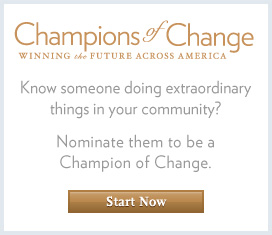Champions of Change Blog
Tune in Thursday: Observing the Anniversary of the Americans with Disabilities Act
Posted by on July 24, 2013 at 4:15 PM EDTThis Friday, July 26th, marks the 23rd anniversary of the Americans with Disabilities Act (ADA). The ADA is a landmark law that profoundly changed our nation. On the trajectory of forming a more perfect union, the passage of the ADA in 1990 was a major step forward in keeping a key promise of the American experiment: ensuring equal opportunity for all. This is personally important to me. As an immigrant, as an African American woman, as a civil rights attorney and as a deaf person, the ADA is more than just a law. It is a concrete symbol of hope and opportunity for me, for my family and for the millions of Americans with disabilities who simply want the chance to be full and active members of our society, participants in our democracy and our economy who can be self-sufficient.
The ADA promised equal access in workplaces and educational institutions, and in the transportation required to get there. It provided for full participation, independent living, and economic self-sufficiency for those of us living with disabilities. It also gives Americans with disabilities avenues to pursue legal remedies to safeguard all of those rights. As we have learned, time and again, the only way to safeguard the hard-fought rights of the 20th century is to fight to preserve them in the 21st century. That is why President Obama has marshaled the resources of his Administration to advance the goals of the ADA so that it is not just the letter of the law, but the spirit of the law, that's being applied all across this country.
This Thursday, July 25, the White House Office of Public Engagement will host an event from 11:00 AM to 1:30 PM (EDT) to commemorate the 23rd anniversary of the ADA. We invite you to participate from your communities via the live web stream at whitehouse.gov/live. Our conversation will include remarks from Secretary of Labor Tom Perez, Senior Advisor to the President Valerie Jarrett, and White House Domestic Policy Council Director Cecilia Munoz You will also have the opportunity to hear from leaders from across the federal government about some of the important work that is happening in the agencies to protect the rights of, and participation by, people with disabilities in our communities. And I am looking forward to introducing you to eight incredible young people who we will be honoring as “Champions of Change” for their advocacy efforts, their innovative projects and their embodiment of the spirit of the ADA. The Champions of Change program was created as an opportunity for the White House to feature groups of Americans – individuals, businesses and organizations – who are doing extraordinary things to empower and inspire members of their communities. This live stream will be closed captioned.
I hope you will join us on Thursday to watch, to learn, to celebrate and to recommit ourselves to upholding and enhancing the principles of the ADA. To watch this event live, visit www.whitehouse.gov/live at 11:00 am EDT on July 25th.
Claudia Gordon is an Associate Director of the White House Office of Public Engagement.
Learn more about DisabilitiesMinimizing Healthcare’s Environmental Footprint
Posted by on July 17, 2013 at 3:38 PM EDT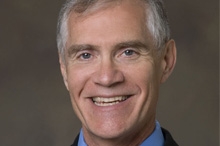
Jeff Thompson is being honored as a Champion of Change for his work on the front lines to protect public health in a changing climate.
It wasn’t too long ago when you would rarely hear “healthcare” and “sustainability” in the same sentence. After all, many healthcare organizations thought their purpose was solely to take care of patients in a hospital or clinic. But at Gundersen Health System, headquartered in the Midwestern city of La Crosse, Wisconsin, we believe it is also our responsibility to help our patients and communities stay well, and part of that is caring for the health of the environment.
We started working on a number of projects in 2003, but in 2008 we took a hard look in the mirror. We knew that healthcare buildings are some of the most energy intensive buildings around (2.5 times more so than commercial office buildings according to the Department of Energy). We knew that our energy costs were rising at an alarming rate of $350,000 per year and growing, and those costs were being passed along to patients in the form of higher healthcare costs. We needed to take a hard look at our practices and take the necessary steps to improve our environmental impact. It was the right thing to do for our patients, our staff, and the communities we serve.
We developed our sustainability program, called Envision®, and set a goal that surprised many in the healthcare community: energy independence in 2014. As the CEO of Gundersen Health System, I can tell you that we’re on track to accomplish that goal through vigorous energy conservation measures and renewable energy partnerships.
Our Envision team started with “low hanging fruit.” An energy audit in 2008 opened our eyes to dozens of energy saving opportunities available. We examined our heating/cooling systems, lighting, and employee behavior and used a number of measures to improve energy efficiency and reduce energy demand. By the end of 2009, those efforts led to a 25 percent improvement in our energy efficiency. Our $2 million investment saves the organization more than $1 million every year in energy costs.
But energy conservation measures will only take us so far toward our energy independence goal. The rest will come from renewable energy projects. We tapped into a number of natural resources and several government entities and private businesses who saw the benefits of renewable energy partnerships for our communities. Some of our most successful projects are those we’ve accomplished with community partners.
For example, we worked with our local county government to use previously wasted methane gas from the landfill and turned it into a renewable energy source. The project created a revenue source for La Crosse County, saves our health system hundreds of thousands of dollars and made our Onalaska Campus 100 percent energy independent. We also partnered to develop a wind farm with the rural village of Cashton, Wisconsin, and Organic Valley, the largest cooperative of organic farms in the country. The wind farm generates enough electricity to power 1,000 homes. It is a source of income for both Gundersen and Organic Valley, and a source of pride for the people who live in Cashton.
Our goals are to decrease pollution and save healthcare dollars. Along the way, we have been able to inspire our staff and community with projects ranging from energy conservation and renewable energy to sustainable foods and waste management. Gundersen Health System is one of thousands of healthcare organizations in our country. If we all join together and work toward the same goal through programs like the Healthier Hospitals Initiative, think of the difference we can make in the health or our communities. Minimizing our environmental footprint is not just a trend. It’s the right thing to do for our patients, our communities and our country. We all just need to look in the mirror, understand we are part of the problem and take action to become part of the solution.
Jeff Thompson is Chief Executive Officer of Gundersen Health System.
Learn more about Energy and Environment, Health CareProtecting Human Health in a Changing Climate
Posted by on July 17, 2013 at 3:02 PM EDT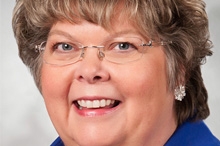
Therese Smith is being honored as a Champion of Change for her work on the front lines to protect public health in a changing climate.
Climate change and public health go hand in hand. Illustrating this point, in Healthy People 2020 the Department of Health and Human Services outlines its objective to promote health for everyone through a healthy environment. To do that, we must focus on six different areas including outdoor air quality, our homes and communities, ground water, toxic substances and hazardous wastes in our air, water and land, and our entire global environment.
My job as a public health professional is to try and make a difference one person at a time, one place at a time, if at all possible, by educating, volunteering, and letting people know that clean air is everyone’s responsibility—we all need to breathe it!
The American Lung Association of the Midland States has given me a platform to educate more people about the link between air quality and chronic conditions, such as lung disease, diabetes, and heart disease. As an advocate in various clean air campaigns, I continue to make sure that everyone everywhere gets the chance to breathe the cleanest air possible, both indoors and out.
I work in my community and across the state of Michigan through Blue Cross Blue Shield of Michigan as a Health Advocate and Chronic Condition Case Manager to educate members about lung disease and the importance of a healthy environment. I educate members with asthma, chronic obstructive pulmonary disease, and other respiratory illnesses that are affected by poor air quality.I make sure they understand how they can make small changes to protect their health on ozone action days, when weather conditions make it likely that ground-level ozone will approach unhealthy levels and are cautious about air pollutants to help improve their quality of life and hopefully their environment too.
I am currently working on my PhD in Public Policy and Administration with a focus on Health Policy to make a difference in changing the course of health policy – to make a difference in the world – so we can all breathe cleaner air.
Therese Smith is a Nurse.
Learn more about Energy and Environment, Health CareProtecting Health in a Changing Climate
Posted by on July 17, 2013 at 2:26 PM EDT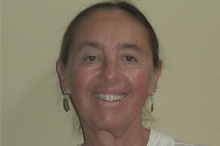
Dr. Linda Rudolph is being honored as a Champion of Change for her work on the front lines to protect public health in a changing climate.
In 2004, I was the local health officer and public health director in Berkeley, California. We worked to improve children’s health by making it easier for kids to walk or bike to school, promoting better access to healthy foods through community gardens and local farmers markets, and reducing exposures to chemicals and pollutants that trigger asthma. Do you see the connections to climate change? I didn’t, at first.
But as California began tackling climate change, two things quickly became apparent to me. First, the impacts of climate change exacerbate many of our most serious health problems – the very chronic diseases I was seeing in all of the communities I served, and which were (and continue to be) especially prevalent in low income communities with limited resources for health care. Second, many of the strategies that reduce greenhouse gas emissions and strengthen community resilience in the face of climate change are the very same strategies that help us to reduce obesity and chronic illness.
I now believe that climate change itself is the greatest health threat we face in the 21st century. I focus on climate change in my professional work, because if we don’t act urgently and comprehensively, climate change will undermine all our other public health efforts. I’ve also started advocating for climate action as a private citizen, in my personal time, because to truly move the needle (or thermometer) on climate change, we must also engage the passion, activism and voice of every American.
People everywhere care about their health and about the health and well-being of their children and grandchildren. But health workers have a critically important role to play in addressing climate change. We can connect the dots: warmer temperatures can mean higher ozone levels, longer pollen seasons, and more asthma and allergies. More droughts can mean higher food prices, greater food insecurity, and more obesity and diabetes.
Public health professionals can engage with community partners to identify assets and solutions that build community resilience and fight climate change at the same time. For example, parks and tree canopies soak up carbon and other pollutants, create safe places for kids to play and provide shade to help prevent heat illness. A healthy community design offers transportation options that increase physical activity, decrease air pollution and preserve nearby farmlands and open space.
We can find win-win solutions that fight carbon pollution and climate change, reduce health inequities, and improve the health of everyone in our communities, but it will take a different kind of public health work. It will require that we collaborate closely with those who work in transportation, housing, agriculture, and many other sectors, and that we engage deeply with people in the most vulnerable communities. All of us need to let our policy makers and leaders know that we need to act vigorously on climate change right now, to protect the health of our children, ourselves, our neighbors, and our communities.
My work has shown me that climate action can make our communities more vibrant, attractive and livable. It can make our food systems more diverse and sustainable, our air and water cleaner, and our communities greener and more walkable, all of which will have huge health benefits. In California, we’ve already begun to accomplish some of this, thanks to state climate change legislation championed across party lines and supported and strengthened by the involvement of public health professionals, community advocates and organizations, and residents of communities throughout the state. As a nation, we must do the same – work together to take climate change action that benefits our health now, and protects our health into the future.
Dr. Linda Rudolph is the Co-Director of Climate Change and Public Health Project at Public Health Institute.
Learn more about Energy and Environment, Health CareSafeguarding our Environment for Health and Fighting Climate Change
Posted by on July 17, 2013 at 1:57 PM EDT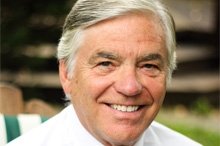
Dr. William Rom is being honored as a Champion of Change for him work on the front lines to protect public health in a changing climate.
As author of Environmental Policy and Public Health: Air Pollution, Global Climate Change, and Wilderness and an instructor on environmental and global health at New York University for 25 years, I have reached dozens of policy students and medical residents and fellows. I have been involved in air pollution policy for the past decade, leading the American Thoracic Society’s Environmental Health Policy Committee, presenting data to the Clean Air Scientific Advisory Committee and meeting with the EPA Administrator to encourage stricter standards ground level ozone and particulate matter to protect human health. I delivered Medical Grand Rounds on Climate Change and Global Public Health to international meetings and medical schools from New York to Addis Ababa, Ethiopia and Cape Town, South Africa. I traveled by dogsled with the Thule Inuit in northwestern Greenland in 2008, where I found that the ice was melting faster than ever before with four more months of open seawater compared to 30 years ago. I have canoed the major Arctic Rivers including the Albany, Churchill, Back and South Nahanni. As a Fellow for two decades at The Explorer’s Club, I have been awarded four Flag expeditions, including travel with the Thule Inuit by dogsled in northern Greenland to obtain eyewitness accounts of the effects of global warming. To inform my professional colleagues, I have organized symposia on the topic for pulmonary doctors over the past decade. Currently, Dr. Kent Pinkerton and I are co-editing a textbook on Climate Change and Global Public Health.
Climate change is projected to exacerbate heat waves and interactions with air pollutants to increase cardiorespiratory mortality. Hurricanes may become more frequent and intense, but most worrisome are potential storm surges that can cause widespread damage. New York University and Bellevue Hospitals, where I work, are still recovering from Hurricane Sandy’s 13-foot storm surge. The salt water damaged hospital electrical infrastructure in the basements of both hospitals, and we were forced to relocate for three months. This resulted in patient evacuations and required the salvage of many thousands of research samples.
As Director of NYU’s Division of Pulmonary, Critical Care, and Sleep Medicine and Bellevue Hospital’s Chest Service for 25 years, I have witnessed environmental medicine first hand. When air pollution particulates and ground-level ozone increase, we admit more asthma patients and chronic obstructive pulmonary disease patients in our Chest Service and ICU.
I am also interested in the “smoky houses” problem from indoor biomass burning and have recently chronicled this challenge in photos from Ethiopia and Madagascar. At Addis Ababa’s Black Lion Hospital I served as faculty, training their first two pulmonary fellows. We observed lung disease, pneumonia, and lung cancer from indoor air pollution.
I served as a legislative fellow in health and environmental policy in the U.S. Senate for Senator Hillary Rodham Clinton. For her, I wrote the Caribbean Wilderness Act (signed into law by President Bush), the Family Asthma Act, the Environmental Public Health Tracking Act, and the Electronic Medical Record and Health Quality Act. I served on the Environmental Roundtable for Research and Education in the Environmental Health Sciences of the Institute of Medicine and am on CDC’s WTC Health Program Scientific/Technical Advisory Committee.
Through all of my work, I’ve found it is critical to reach a larger stage on climate change and explain how its consequences affect our health.
Dr. William Rom is Director of the New York University Pulmonary Division and Bellevue Hospital Chest Service.
Learn more about Energy and Environment, Health CareThreat of Climate Change to Human Health
Posted by on July 17, 2013 at 1:04 PM EDT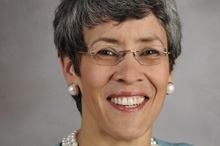
Susan Pachero is being honored as a Champion of Change for her work on the front lines to protect public health in a changing climate.
As a pediatrician, I thought I’d never find anything as fulfilling and joyful as taking care of children. I am now overcome by an overwhelming sense of responsibility to protect and inform my patients and their families about the real effects of climate change on their health.
In 2006, I took my children to watch the documentary An Inconvenient Truth as part of their school homework. I remember my hesitance. I was obviously aware of climate change, but it had always seemed distant. The soundtrack from Melissa Etheridge’s song “I Need to Wake up" still runs through my mind. So does the closing message: “Write to Congress, and if they do not listen, run for Congress.” I remember my children’s passionate response, and it still brings a smile to my heart.
I started as a volunteer for the Climate Reality Project, later became a Climate Reality mentor and then a district manager for the organization’s efforts in Puerto Rico. I led volunteers to share the climate story with anybody willing to listen.
I remember a few close friends, patients, and colleagues sharing their concern of “losing me to this climate thing.” I disagreed. As a physician, I am committed to the art of healing. I have to approach anything and everything that may affect my patient’s mental or physical well-being. The reality is that climate change will affect generations to come. I have the responsibility to share knowledge on the challenges we face as a society-- particularly when there is a chance for harm to the health and security of vulnerable people.
I give talks as a Climate Leader with the Climate Reality Project to help fill the knowledge gap on climate change. I have geared my efforts not only to engage the general public, but also to target individuals and groups involved in health care. As health care providers, we are trusted advocates and messengers. I have found that even in the Texas Medical Center, among the largest in the world, knowledge regarding the health dangers related to a changing climate is limited.
I work as a representative for the Puerto Rico Climate Change Council, working with Puerto Rico’s Enlace Latino de Accion Climática, sponsored by El Puente Community Group for Peace and Justice, and I participated as a representative and author for Puerto Rico’s “National Climate Assessment - Southeast Region-Health Sector Report (2012).” I currently work with the American Academy of Pediatrics and am a co-author of a position statement on the need to acknowledge the harmful effects climate change has on American children. Additionally, I lead an effort with the American Lung Association Plains-Gulf Region in Houston to release a statement regarding the changing climate in our state and the need to “fight for the air.” In consultation with Dr. Ronald A. Sass from the James A. Baker III Institute for Public Policy at Rice University in Houston, I am forming a coalition of individuals with diverse backgrounds, among them health care, , faith groups, student organizations, academics, scientific fields, and local community representatives, who openly acknowledge the need to engage our communities in open discussions that will facilitate the implementation of climate mitigation and adaptation strategies for the state of Texas.
As a physician, my role in promoting health extends beyond my interaction with patients in the office. I have the responsibility to help restore balance in the lives of my patients and try to make a difference for all Americans. I cannot do anything less for our planet.
Susan Pachero is an Associate Professor at the University of Texas Health Science Center.
Learn more about Energy and Environment, Health Care
- &lsaquo previous
- …
- 49
- 50
- 51
- 52
- 53
- 54
- 55
- 56
- 57
- …
- next &rsaquo

